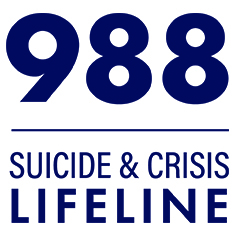Suicide in Late Life: Unique Factors and Enduring Treatment Gaps
October 07, 2014

Suicide among older adults (individuals 65+) is a major public health concern. While the overall suicide rate among older adults has declined somewhat in recent years, the suicide rate for males is highest among those 75 and older. Moreover, suicide in late life is on course to become a greater societal concern in light of projected increases in both the prevalence of mental illness – particularly substance use disorders – and the size of the older adult population in the years ahead.

Untreated mental illness – especially depression – is a particular risk factor for suicide among older adults. Older adults with depression or other mental health conditions receive treatment at strikingly low rates. A national study examining help-seeking among older Americans found that only 1 in 10 older individuals with severe mental health needs received treatment. Among the barriers to treatment is the fact that older adults often attribute symptoms of depression or other psychological conditions to aging or to medical conditions. Research in recent years has documented that “perceived need” is an especially important factor in engagement with mental health treatment among older adults. When older adults do recognize their need and seek care, they frequently turn to primary care providers, who often fail to detect symptoms of depression in older patients.
Complicating the detection and treatment of depression among older adults is the fact that depression often manifests differently in late life than in earlier years. Often, depression in older adults is not accompanied by dysphoria (sadness) – a hallmark symptom of depression in younger individuals. Family members and clinicians should look for changes in appetite, sleep patterns, and loss of interest in previously enjoyed activities, as these are often important symptoms of depression in later life
Social risk factors are significant with respect to late life suicide. Among older adults, limited social support and social isolation are more important social risk factors than interpersonal discord and job-related stress, which are more common among younger adults. Promoting family and social support and connectedeness should be considered with older adults who exhibit risk factors for suicide.
Physical health decline and functional impairment are also important risk factors for suicide in late life and also provide opportunities for intervening. Significantly, half of older adults who die by suicide had contact with their primary care provider within one month of the suicide. Recognizing and addressing perceptions of being a burden on others is important in the context of health or functional decline in older adults.
A newly identified group of older adults at elevated risk for suicide are individuals recently discharged from nursing homes. These findings add to the spate of data from other inpatient settings revealing care transitions to be a time of particular vulnerability. Greater attention to increased suicide risk as part of discharge planning processes in nursing homes and to post-discharge follow-up procedures (particularly within the first three weeks post-discharge) is needed.
Older adults who attempt suicide are generally more likely to plan ahead and to use especially lethal means than are their younger counterparts. In fact, individuals 65 and older have the highest suicide completion rate. Suicidal behaviors among older adults are not often impulsive acts.
Notwithstanding the unique considerations and significant treatment gaps contributing to suicide risk in late life, there are also reasons for hope. Especially encouraging is increasing evidence that demonstrates the effectiveness of treatments (including psychological and pharmacological interventions) for depression and other mental and behavioral health conditions in late life. For example, several recent studies have shown evidence-based psychotherapies like Cognitive Behavioral Therapy to be effective in reducing depression, insomnia (an overlooked risk factor for suicide in older adults), and even suicidal ideation in real-world clinical settings. If need is recognized and older adults get treatment, they can generally realize significant improvement.
Another reason for optimism is the implementation this year of full parity for outpatient mental health treatment in Medicare. Psychotherapy and other outpatient mental health services are now reimbursed at 80 percent, the same rate as medical services and a significant increase from the historical rate of 50 percent. This development – the most important change in mental health reimbursement policy under Medicare since the program’s inception 50 years ago – provides greater financial access to care for older individuals.
It is critical that we devote greater attention to suicide prevention in late life and to meeting the mental health needs of older adults. Reducing suicide among older individuals requires actions at multiple levels to increase recognition and treatment of depression and other mental health conditions. We must learn to recognize and address the specific (and often unique) factors that increase vulnerability and risk in the later years of life.
References
Conwell, Y. (2013). Suicide and suicide prevention in late life. Focus, 11, 39-47.
Karlin, B. E., Duffy, M., & Gleaves, D. H. (2008). Patterns and predictors of mental health service use and mental illness among older and younger adults in the United States. Psychological Services, 5, 275-294.
Karlin, B. E., Trockel, M., Brown, G. K., Gordienko, M., Yesavage, J., & Taylor, C. B. (2014). Comparison of the effectiveness of Cognitive Behavioral Therapy for depression among older versus younger veterans: Results of a national evaluation. Journals of Gerontology, Series B: Psychological Sciences and Social Sciences. Advance online publication.
Luoma J.B., Martin, C.E., & Pearson, J.L. (2002). Contact with mental health and primary care providers before suicide: A review of the evidence. American Journal of Psychiatry, 159, 909-916.
McCarthy, J. F., Szymanski, B., Karlin, B. E., & Katz, I. R. (2013). Suicide mortality following nursing home discharge in the Department of Veterans Affairs health system. American Journal of Public Health, 103, 2261-2266.
